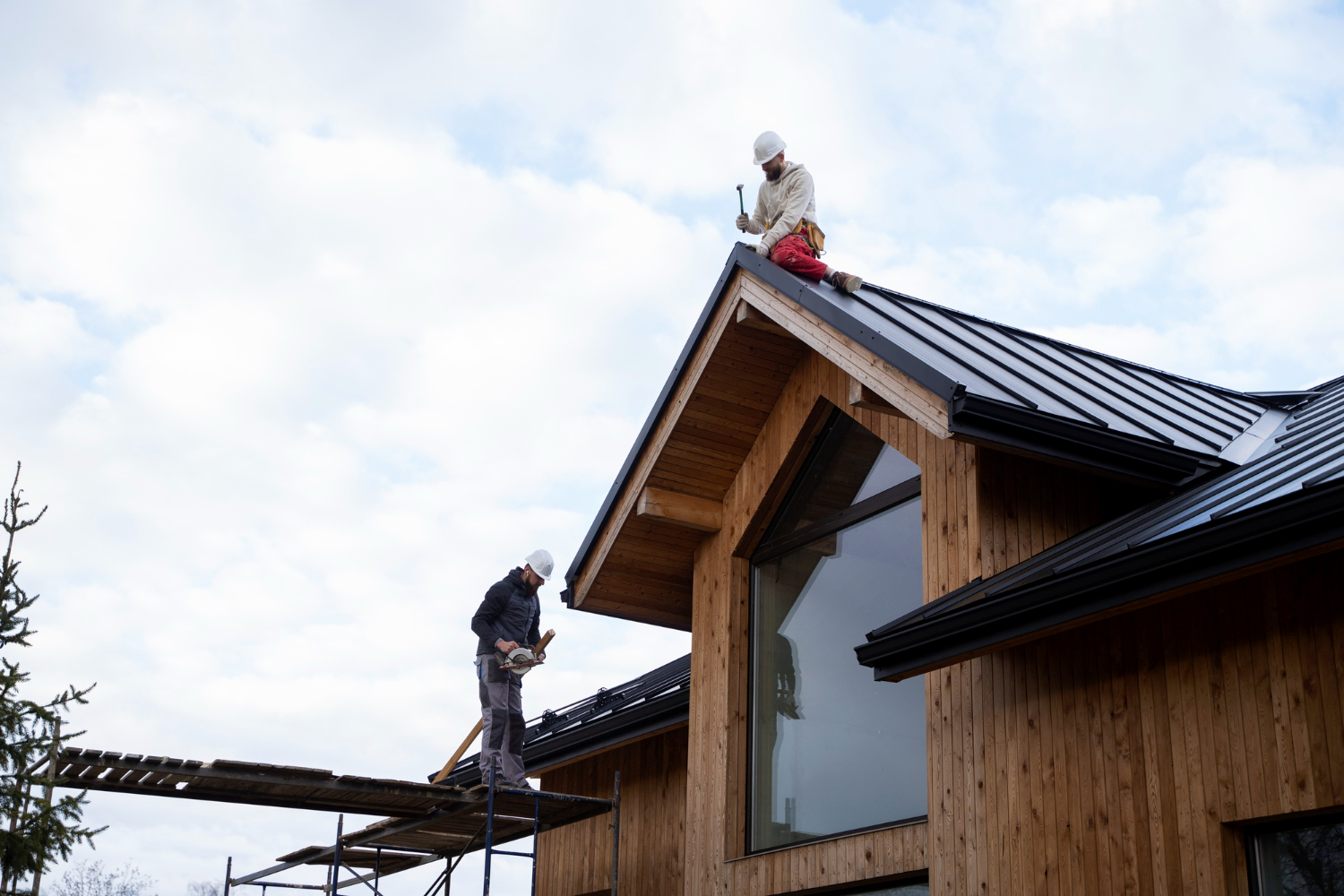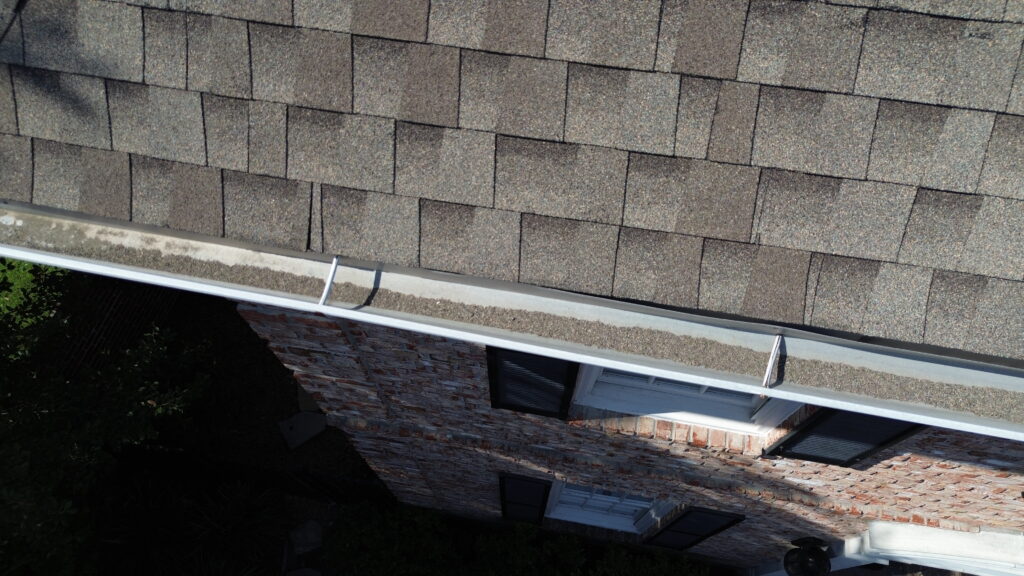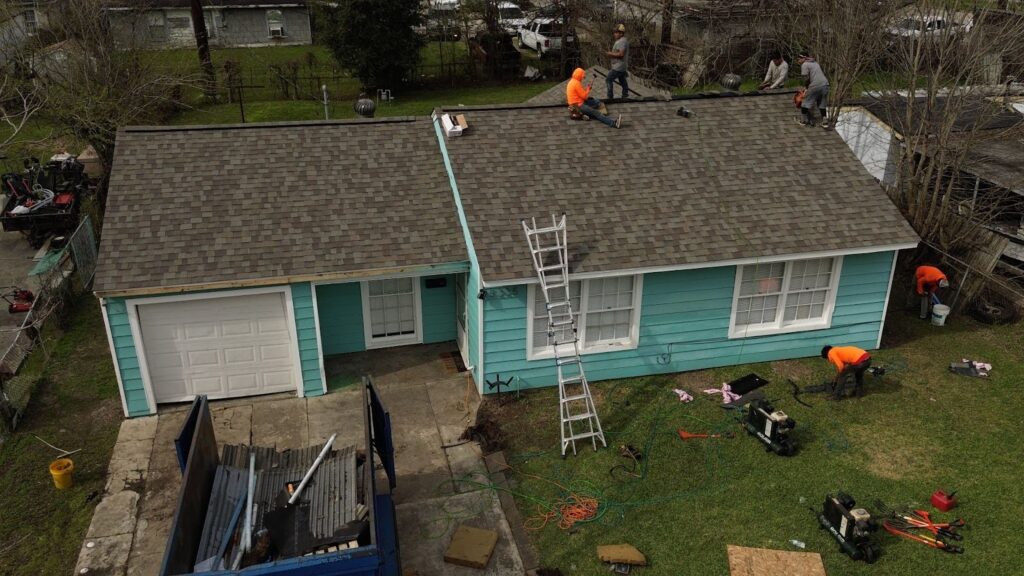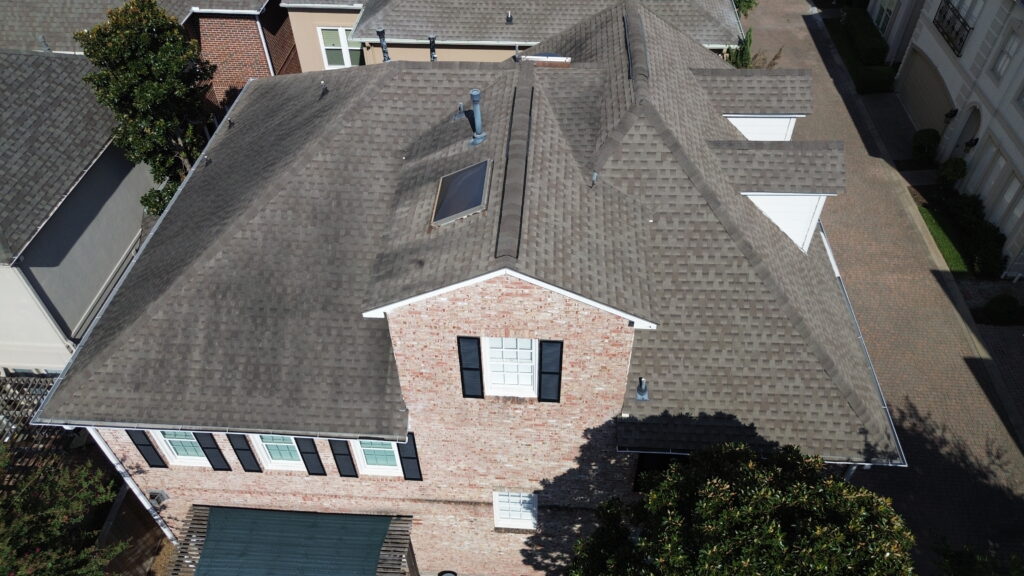
Many homeowners consider gutters just rainwater disposal channels. But in reality, these narrow troughs do far more than just manage runoff. When functioning properly, they serve as a critical line of defense for your roofing system, directing water away from vulnerable edges and preventing costly structural damage.
However, when gutters clog, leak, or detach from the roofline, problems such as fascia board rot, attic moisture, mold growth, and even shingle damage can occur, which are signs of deeper gutter roofing issues that shouldn’t be ignored.
Therefore, to avoid these issues, in this blog, we will explore the relationship between gutters and roof health, identify common gutter problems to watch out for, and discuss how proactive fixes can prevent long-term damage.
Why Gutters Are Crucial to Roof Health
Imagine you have just installed a new roof in a region that sees frequent rainfall, but within a few months, you start noticing water stains appearing on your ceiling. Upon checking it, the problem wasn’t faulty roofing materials, but clogged and overflowing gutters that allowed water to seep beneath the shingles. One should know that gutters serve as your roof’s drainage system, collecting rainwater and directing it safely away from the structure. Without gutters, water would cascade over the roof edge, saturating your walls, pooling around your foundation, and slowly degrading roofing materials. Additionally, gutters play a vital role in preventing ice dams during colder months in colder climates, minimise erosion, and reduce the risk of water seepage into the attic or insulation systems. Therefore, it’s essential to understand how gutters contribute to the health of a roof.
Common Gutter Problems That Signal Roofing Damage
Here are the most frequent gutter roofing issues that may indicate broader problems:
1. Clogged Gutters Leading to Roof Leaks
Leaves, twigs, moss, and debris can accumulate in gutters and downspouts, causing water to overflow and potentially damage the surrounding area. When water sits at the edge of the roof or seeps under shingles, it can cause leaks. Over time, this may lead to insulation damage, ceiling stains, or rotting sheathing beneath the roof surface. This highlights the importance of regular roof inspections, which can identify hidden consequences lead due to clogged gutters.
2. Sagging or Detached Gutters
Another common problem is when gutters pull away from the fascia, they compromise the edge of the roof. This exposes wood components to moisture, which can lead to rot, especially in regions with high humidity or rainfall. Detached gutters also fail to divert water effectively, allowing moisture to infiltrate both the roof and walls. Many homeowners, especially in Florida, noticed a section of gutters sagging after a storm. Within weeks, water had seeped behind the siding, resulting in mold growth in the attic and damaged fascia that needed complete replacement. In such cases, timely residential roof repair becomes critical to prevent further structural deterioration.
3. Improper Gutter Pitch or Slope
A common installation flaw is the improper slope, which prevents water from draining efficiently toward the downspouts. As standing water accumulates, it adds unnecessary weight to the gutter, increasing the risk of detachment and water overflow at the roofline. If water consistently sits in one area, it can also freeze in winter, leading to ice dams, which is another concerning reason to be aware of.
4. Cracked or Leaking Gutter Joints
Minor cracks at gutter seams might appear harmless, but they often indicate underlying issues. These cracks allow water to leak and drip down siding or back onto the roof deck. This consistent moisture accelerates decay and can lead to mold growth on roofing structures, accelerating roof decay and increasing the risk of major repairs.
5. Rust and Corrosion
If you have metal gutters, they are more prone to rust, especially in coastal or rainy environments. Rust spots on gutters or roof flashing may be early indicators of metal fatigue that could soon translate into water infiltration through the roofing membrane or underlayment.
6. Mold and Mildew Near Gutter Line
Black streaks, green mold patches, or persistent mildew along the soffit or fascia boards typically indicate long-term water exposure. If these signs appear near gutter lines, it’s often a signal that water is backing up onto the roof rather than being channelled away. These signs of gutter roofing issues can quickly worsen if left unattended, emphasizing the need for timely inspection and maintenance.
Gutter Fixtures To Consider Before Bigger Roofing Issues Appear
Simply cleaning your gutters is not the solution; you have to design a comprehensive drainage system that works efficiently and adapts to your climate and property conditions. Here are some gutter roofing solutions and upgrades that help stop bigger issues before they start-
1. Gutter Guards
You can install mesh or reverse curve gutter guards, which prevent debris buildup and reduce the frequency of clogs. This minimises standing water and keeps the gutter system functioning properly throughout the year.
2. Downspout Extensions
Standard downspouts only redirect water a few feet away from your foundation. Whereas extensions, or splash blocks, can carry runoff further, usually 4 to 6 feet, which helps prevent water from seeping into basements or affecting roof edges where erosion occurs.
3. Proper Fascia and Soffit Protection
Investing in water-resistant fascia boards and vented soffits ensures that even if some moisture reaches the edge, it won’t easily soak into the structure. These elements act as a final line of defence for roof decking and attic ventilation. You can opt for upgraded materials, such as aluminium-wrapped fascia or vinyl soffits, which are especially effective in high-moisture environments.
4. Seamless Gutter Installation
Unlike sectional systems, seamless gutters are custom-fabricated to match the exact dimensions of your home, providing a sleek and efficient solution for water management. Their continuous design promotes uninterrupted water flow, which helps minimize clogs and backups commonly caused by joints or seams. And if professionally installed, these gutters can last 20–30 years, making them a long-term investment in both roofing protection and home aesthetics.
5. Routine Gutter Maintenance Plan
In many areas, roofing contractors offer annual or bi-annual gutter inspection plans. These include cleaning, sealant touch-ups, pitch adjustments, and leak detection, all of which can spot early signs of roofing vulnerability. It can extend the lifespan of both gutters and roofing materials. Learn more about roof repair services near you to keep your home secure.
6. Gutter Heating Systems (For Cold Climates)
In regions prone to snow, heated gutter cables can help prevent ice dams from forming. Ice dams often push water back up under shingles, causing damage to insulation and drywall that can remain hidden until it’s too late. Therefore, these systems are especially useful on low-slope roofs or areas with limited sun exposure.
Conclusion
The condition of your roof speaks about the overall health of your home. A dripping gutter seam, misaligned slope, or mildew around the soffit may appear minor. Still, they’re often early indicators of roofing damage, such as rotting fascia, hidden leaks, or compromised shingles. Therefore, solving these problems not only fixes the gutter but also preserves the safety and value of your house, as prevention is always better than a cure.
Are you ready to address your gutter problems? At TridentPro Construction, we don’t just patch visible problems; we look deeper. Contact us today at +1 832-880-6099 for a thorough evaluation and long-term protection you can always trust.




